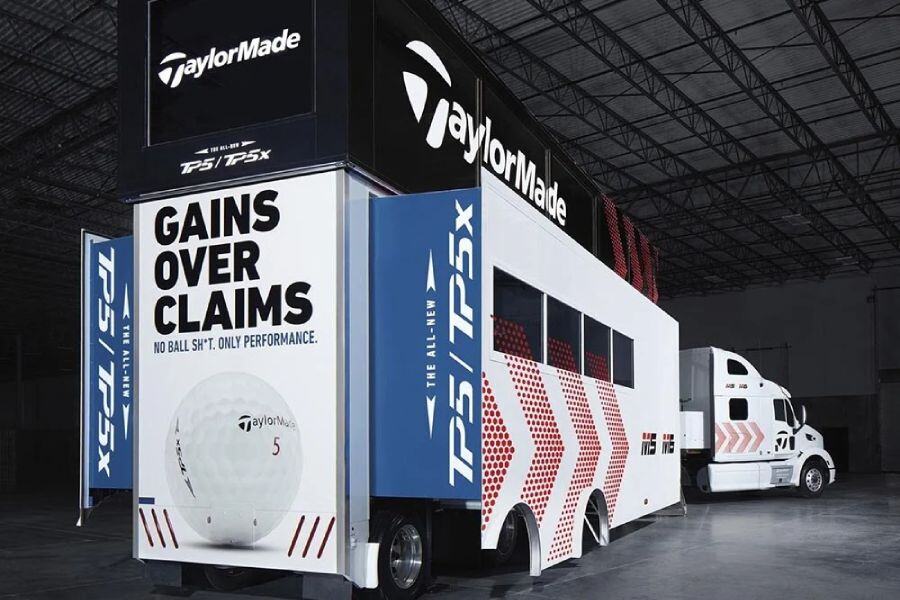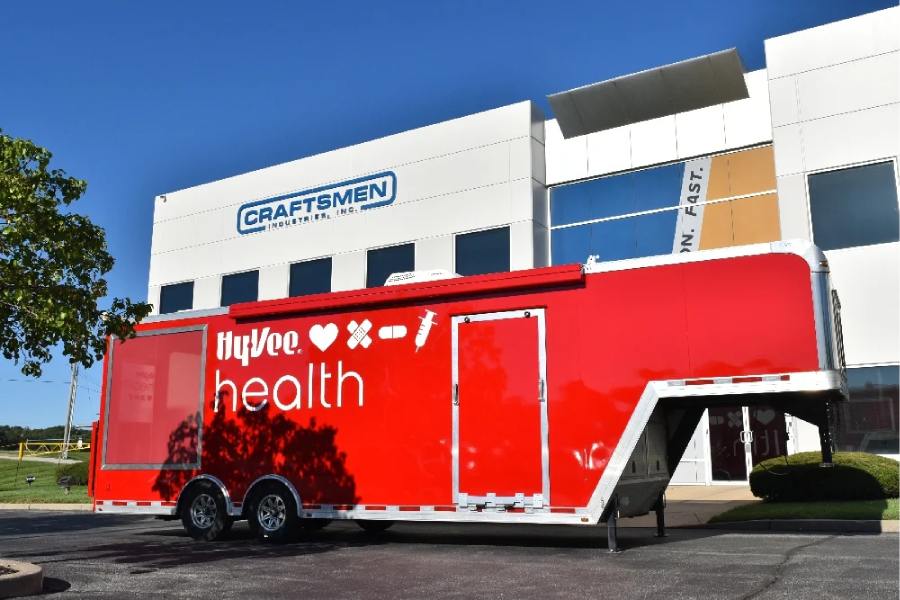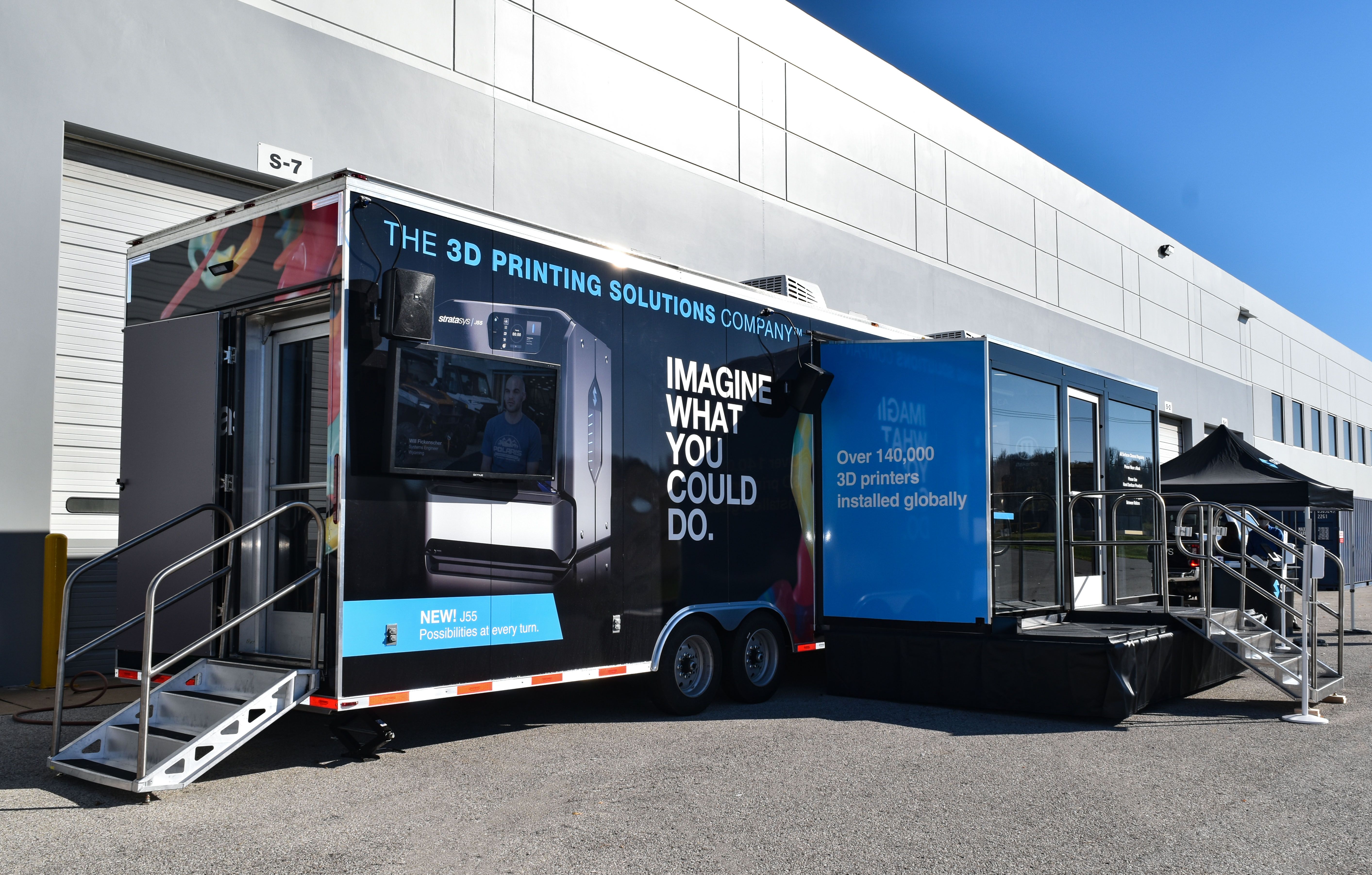What Is Experiential Marketing?
When it comes to trade shows, work events, or promotional campaigns, success is never guaranteed. It’s not just the quality of the product that keeps...
4 min read
Craftsmen Industries May 5, 2025 8:15:46 AM

Modern brands often struggle to break through digital noise and create lasting customer connections. Traditional ads fall flat, customer engagement drops, and brand loyalty weakens. Experiential vehicles solve this problem by offering a physical, immersive brand experience that customers remember and share. These mobile brand activations bring marketing to life, driving deeper emotional bonds and real-world engagement.
Let’s understand what experiential vehicles are, why they are critical today, and how your brand can leverage them to dominate consumer attention.
An experiential vehicle is a branded, mobile platform designed for immersive consumer engagement. It transforms traditional vehicles like trucks, buses, trailers, or vans into interactive brand experiences.
Brands use experiential vehicles to:
For example:
Experiential vehicles function as moving brand ecosystems, turning static marketing messages into dynamic, living experiences.
Experiential vehicles are critical because they close the gap between brand promise and customer experience. They create authentic, memorable, and high-impact engagements that traditional media cannot match.
Experiential marketing drives emotional resonance by appealing to core human senses.
According to EventTrack 2023:
When consumers feel something firsthand, they are 3x more likely to recommend the brand to others.
Experiential vehicles allow brands to meet audiences where they live, work, and play.
Instead of waiting for consumers to visit, brands proactively go to:
This mobility can generate up to 200% more impressions compared to static activations in retail stores or event booths.
Mobile activations naturally encourage consumers to capture and share their experience.
According to Nielsen’s 2023 study:
By designing photo opportunities, branded backdrops, and interactive challenges, experiential vehicles become powerful engines of organic reach.
Experiential vehicles can be embedded with:
This enables seamless collection of:
Brands can use these insights to refine future campaigns, personalize digital retargeting, and build loyalty programs based on real user behavior.
Experiential vehicles set brands apart in crowded markets.
While most brands compete for digital ad space, brands with immersive physical experiences:
For example, the Tesla Cybertruck pop-up tour offered test rides from a custom trailer, gaining unprecedented PR coverage without a traditional ad spend.
Customers who emotionally connect with a brand through real experiences have:
Experiential vehicles create brand loyalty from the very first interaction, shortening sales cycles and deepening customer relationships.
Unlike traditional advertising, experiential vehicle campaigns allow clear performance tracking.
Brands measure:
According to the Experiential Marketing Content Benchmark, brands that prioritize experiential activations report an average ROI of 5:1, outperforming TV, radio, and digital banners.
Experiential vehicles vary by campaign goals, audience types, and logistics. The main types include:
|
Type |
Description |
Common Use |
|
Mobile Pop-Up Shop |
Custom van or trailer transformed into a branded retail store |
Product launches, special edition releases |
|
Mobile Showroom |
High-end trailer showcasing new product lines |
Automotive, fashion, tech |
|
Food Truck Activation |
Branded food truck serving customized snacks or drinks |
FMCG promotions, beverage sampling |
|
Sampling Truck |
Vehicles that distribute product samples at events or busy intersections |
CPG brands, new product introductions |
|
Education Trailer |
Interactive classroom-on-wheels with AR/VR integration |
Healthcare awareness, tech demos, corporate training |
Examples from leading brands:
Every choice, from vehicle design to activation location, aligns with the broader brand experience strategy.
Creating a high-impact experiential vehicle activation demands meticulous planning across creative, operations, and marketing departments.
Key elements include:
Brands that integrate all six elements typically report 50% higher engagement rates and greater conversion at events.
Experiential vehicles have shifted from a “nice-to-have” to a critical tool for brand success. Brands embracing immersive, mobile activations:
Experiential vehicles drive 3x higher engagement, 4x greater ROI, and build lifetime customers faster than any other channel.
Brands across industries benefit, especially in consumer goods, tech, automotive, fashion, and food and beverage sectors. Any brand seeking emotional engagement, first-party data, or brand differentiation can achieve strong ROI through experiential vehicles.
Costs vary depending on vehicle type, customization, staffing, technology, and campaign length. Basic pop-ups can start at $50,000, while fully customized mobile showrooms can exceed $250,000 for multi-city tours.
Building and launching a campaign typically takes 8–16 weeks. This includes vehicle sourcing, customization, experience design, staffing, route planning, and permitting.
Yes, many experiential vehicles integrate AR, VR, touchscreens, and IoT elements. These technologies enhance interactivity, capture deeper data, and make experiences more memorable and shareable.
Brands track engagement rates, lead captures, social shares, sentiment analysis, on-site sales, foot traffic, and post-event brand lift studies. A strong campaign combines qualitative impact with quantitative ROI measurement.
Experiential vehicles are redefining how brands connect, engage, and convert modern consumers. They turn passive audiences into active brand participants, create emotional connections that drive loyalty, and deliver measurable business results. Brands that prioritize mobile, immersive experiences position themselves at the forefront of consumer attention and market innovation.
Whether you’re looking for a state-of-the-art experiential vehicle or a mobile medical unit for sale, Craftsmen Industries offers tailored solutions to meet your brand’s unique needs.

When it comes to trade shows, work events, or promotional campaigns, success is never guaranteed. It’s not just the quality of the product that keeps...

All medical facilities must adhere to government safety regulations. If your healthcare facility is considering expanding its services, you might...

Brands have been drawn to the allure of retail showrooms for as long as there have been things to sell. The ability to showcase their products and...